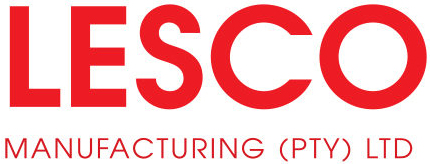Introduction
Featuring in the media is a critical component of developing public relations, creating a positive public image and creating brand awareness. Considering that advertising in key media is an expensive exercise though, the question is: ‘how do you leverage newsworthy content for optimal media exposure, at minimal cost?’ This case study focuses on a PR exercise that was recently performed for Lesco Manufacturing, with exactly that objective in mind.
Background
Lesco Manufacturing started out as a family-owned business with a niche business model that involves the purposeful engineering of quality electrical components that can be hand-assembled by low skilled workers or disabled people, to create employment opportunities for the ‘unemployable.’
Realising the value and potential of this business, in July 2018, a 100% black consortium comprising female industrialists Noluthando Gosa (CEO of Akhona Group) and Zukie Siyotula, as well as former Exxaro CEO, Sipho Nkosi, respectively bought 23% and 10% in the business, which collectively equates to a stake of 33%. The aim is to lead the company into a billion rand, JSE-listed company within five years, and in the process create more jobs and help boost the SA economy.
Approach And Methodology
1.Selecting the most cost-effective approach
To feature a press release in the media, companies can opt for one of two choices: placement advertising or a media exercise. With placement advertising, you pay to place the press release, which simply means you write your own press release, choose which media to feature in and pay for the advertisement space you require.
To provide context, to place a full page black and white only article in just one edition of Financial Mail for example, currently costs just under R50,000 (*prices as at September 2018), a section on the front page of Business Day costs just over R40,000 and to appear on a portion of the 2nd or 3rd page of City Press costs close to R60,000 per placement. To advertise in broadcast media, on radio or TV, costs hundreds of thousands.
The pros of paying for placements, is that your press release is guaranteed to appear in the media, and if your spend justifies it, the media is open to negotiate package deals and offer you extra placements over a period, or an additional editorial. The cons are that it is an expensive exercise, that gives you limited exposure.
For this reason. BWD Advertising (BWD) offered to embark on a ‘media exercise’ for Lesco Manufacturing instead. In a nutshell, a media exercise means that we target selected media and proactively and aggressively ‘sell the story’ to them, with the aim to get as much as possible free exposure, in as many of the media as possible. The cons of this approach, is that you cannot guarantee where and if your press release will be published.
The pros are that your reach and exposure is unlimited, and that the value of the exposure obtained, typically excels the cost that the company is paid for the exercise, exponentially.
2. Creating a dedicated media list
A critical part of the exercise, was to create a dedicated media list, to ensure that Lesco Manufacturing is showcased on the right stage and that they reach their intended target audiences, which could in turn drive and support their business objectives.
To this end, BWD researched and developed an industry-specific media list, using some of its existing media contacts, plus researching additional contacts. Because editors and journalists tend to move from publication to publication quite frequently, it is also important to follow up on contacts via email and phone, and to update your list frequently.
To increase our chances of getting featured, we always include a mix of different media, right through from digital platforms, to print and broadcast. The final list was shared with the Lesco executive team for approval. Their team also had some of their own media contacts which was included.
3. Developing quality content
To improve your chances of attracting the media’s interest, the story has to be newsworthy, of interest to the public, of interest to the business audience, of interest to our economy, or of interest to the country as a whole.
It is also crucial to ensure that your story is written professionally, factually 100% correct and that every statement can be substantiated. To cover all those bases and make sure that the company is represented accurately, the BWD team compiled a set of key questions, that Lesco Manufacturing’s executive team had to respond to collectively.
A press release was then written, which was first sent to Lesco Manufacturing for final approval, before it was distributed to the media.
4. Writing a personalised cover letter
The first line of contact with the media is always via email, to ensure that they understand the context and have the information in hand, by the time you follow up with them telephonically. When distributing the press release to the media, the BWD team also wrote cover letters to accompany it.
The cover letter is addressed to each journalist or editor personally and tailored for each publication, highlighting the key points that would be of specific interest to each publication in question, or that points out the synergy the story has with the readers of the publication.
With each email sent, we attach the press-ready media release that we have written in advance, plus print quality photos and links to more information. This is especially valuable when deadlines are looming, and journalists are pressured to deliver, but they do not have suitable content yet. So it can deliver quick wins. But we also always offer them the opportunity to conduct their own interviews and write the story from their own angle.
As we have first-hand insights and knowledge of the media processes and deadlines, these emails are also sent to the media on the days that are most likely to yield a response.
5. Preparing for handling the media
Another important aspect, is to make sure that it is decided in advance who the company’s media spokesperson or -people will be in the case of media queries or request for personal interviews.
The fact that BWD asks a series of questions at the inception of the media exercise, already prepares the executives for how the story will most likely be perceived from the media or the public’s perspective. Plus the fact that everyone has the final approved media release, ensures that questions can be addressed uniformly.
In Lesco Manufacturing’s instance, the executive members were already used to media interviews, so they required no formal media training or intensive preparation. The option however exists, to obtain media training, or for the agency to act as spokesperson on the client’s behalf.
A major element that must be taken into consideration though, is that the media may have interest in interviewing another member of the team, that is more in line with their theme at the time and the company has to be flexible enough to accommodate that.
Finally, it is absolutely vital for the entire team to understand that media is a fast-moving space and that the speed of your response to media queries could determine whether you obtain or lose an opportunity for mass exposure, in a wink.
The entire pre-selected team therefore almost has to be on standby for the entire week or two that the media exercise is conducted, and ready and able to accommodate the media at the drop of a hat.
6. Contacting the media proactively
BWD allows the media a day or two to process the information, before our team starts to aggressively follow up with the media, by first sending another follow-up email, and then calling the journalist or editor in question, if he or she does not respond to our emails.
Over the years, our team has developed solid relationships with media, plus we continue to remain abreast of newcomers, as we do media exercises for various clients, on an ongoing basis. Some of the reason why the media trusts us, is because some of our staff have personally worked in the media space, our approach has always been quality over quantity, and we believe in being completely open and transparent about the information we share.
For this reason, many of the journalists and editors have also entrusted us with their direct contact details and cell phone numbers. This made a major difference in the results that we achieved in this particular exercise for example, because some of the journalists provided by Lesco Manufacturing did not respond, but we were able to reach out to their editors in chief instead.
When we contacted the media, we also called the radio and TV programme managers and producers, to convince them to conduct live interviews with the Lesco executives.
7. Tracking the results
BWD paid a professional news monitoring agency to track and monitor the results of the media exercise. While some companies do not regard this as necessary, there are several reasons why we do it:
7.1. It enables you to measure the monetary return on investment and determine whether it is a worthwhile business exercise to conduct again in future.
7.2. Due to the fast-paced environment in which they operate, many of the media do not let you know that they’re printing your story and without this official tracking service, you may miss some of them.
7.3. The media monitoring agency provides clips of each article that appeared in all media, for your records.
7.4. By looking at the angle that the various media used for your story, it gives you insights into how to pitch to them in future, for an enhanced placement success ratio.
7.5. You can start compiling a list of media that are likely to have an interest in the kind of stories your business has to tell and foster strong relationships with them.
Outcomes
Lesco Manufacturing paid BWD Advertising less than R90 000 for the entire media exercise, with which BWD managed to obtain media exposure to the value of more than half a million rand, with a reach of more than 2.5 million people, within a period of two months.
Some of the media which Lesco Manufacturing featured in, includes the likes of Radio 702, Business Day, City Press, Daily Dispatch and Business Report, as well as broadcast media such as Classic Business Breakfast with Moneyweb and a feature on PowerFM. We were also able to negotiate a slot on CNBC Africa, which the team was not able to attend at the time.


